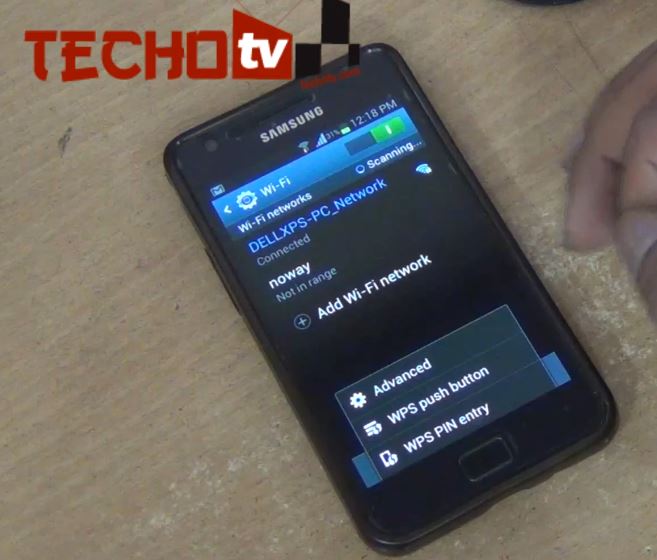Ever screamed at your screen, absolutely certain you landed that headshot, only to find yourself staring at the respawn timer? Or perhaps you’ve experienced that delightful moment where your character teleports uncontrollably, as if caught in a rogue sci-fi experiment. If these sound familiar, you’ve likely been a victim of the silent, invisible saboteur of online gaming: latency.
It’s that frustrating delay, the digital hiccup between your lightning-fast reflexes and the game world acknowledging them. You press a button, expecting an instant reaction, but instead, there’s a pause – a moment where the game seems to be pondering your command. High latency can feel like you’re fighting with one hand tied behind your back, turning potential victories into infuriating defeats. But what exactly is this phantom menace that’s messing with your K/D ratio?
Before we dive deep, perhaps a quick, animated rundown is in order? We’ve put together a short explanation that, hopefully, arrives with much lower latency than your last unfortunate encounter with high ping. Check it out!
Table of Contents
Decoding Latency: The Journey of Your Click
At its core, latency (often referred to as ‘ping’ in gaming circles) is the time it takes for a piece of data to travel from your device, reach the game server, and for the server’s response to travel back to your device. This is also known as the Round Trip Time (RTT). Think of it like sending a physical letter: you write it (your input), it travels to the recipient (the server), they read it and write a reply (server processes), and that reply travels back to you. The total time taken for this entire process is latency, typically measured in milliseconds (ms).

It’s crucial to understand that latency is not the same as your internet speed or bandwidth. Bandwidth is the amount of data that can be transferred over your connection at one time (like the width of a pipe), while latency is the delay in that data transfer (how quickly water starts flowing after you open the tap). You can have a super-fast internet plan with high bandwidth but still suffer from high latency if the data packets face numerous delays on their journey.
The Usual Suspects: What Causes High Latency?
Latency isn’t a single gremlin; it’s more like a committee of them, each contributing to the overall delay. Here are the main culprits:
- Geographical Distance: This is a big one. The further away you are from the game server, the longer it physically takes for data to travel. Light-speed is fast, but over thousands of kilometers, those milliseconds add up.
- Network Congestion: Just like rush hour traffic, the internet can get congested. If too many people are using the network infrastructure between you and the server, your data packets can get slowed down or even rerouted, increasing latency.
- Your Home Network: An old or misconfigured router, a poor Wi-Fi signal, or other devices hogging bandwidth on your home network can all introduce delays.
- Internet Service Provider (ISP) Routing: The path your ISP chooses to send your data to the game server isn’t always the most direct. Inefficient routing can add unnecessary hops and, consequently, latency.
- Server-Side Issues: Sometimes, the problem isn’t on your end. The game server itself might be overloaded, underpowered, or experiencing technical difficulties, leading to increased processing times and higher latency for all connected players.
- Device Performance: While distinct from network latency, input lag from your peripherals (mouse, keyboard, controller) or processing delays within your PC/console (if it’s struggling to run the game) can contribute to the *perceived* delay between your action and the in-game result.

Why Every Millisecond Matters: The Impact of Latency in Gaming
For casual single-player games, a bit of latency might go unnoticed. But in the fast-paced, competitive world of online multiplayer, low latency is king. Here’s why:
- First-Person Shooters (FPS) & Third-Person Shooters (TPS): This is where latency is most notorious. High latency leads to delayed hit registration (you shoot, but the server doesn’t register it until much later), getting shot by enemies who seemingly haven’t rounded the corner yet (peeker’s advantage for the lower-ping player), and a general feeling of your actions being out of sync.
- Fighting Games: Precise timing for combos, blocks, and counters is paramount. High latency can make executing these moves reliably next to impossible.
- Real-Time Strategy (RTS) & MOBAs: Quick unit commands, micro-management, and timely ability usage are crucial. Latency can mean the difference between a successful gank and a wasted ultimate.
- Racing Games: Accurate steering, braking, and acceleration are vital. Latency can cause you to overcorrect or react too late to track conditions or other racers.
Simply put, lower latency means your actions are registered by the server almost instantaneously, giving you a more responsive, accurate, and fair gaming experience. It’s the difference between feeling in control and feeling like you’re fighting the game itself.
Recognizing the Enemy: Symptoms of High Latency
If you’re experiencing high latency, the game will often let you know in frustrating ways. Look out for these tell-tale signs, often collectively referred to as “lag”:
- Lag Spikes: Sudden, sharp increases in delay, causing momentary freezes or stutters.
- Rubber Banding: Your character moves forward, then suddenly snaps back to a previous position, as if tethered by a rubber band.
- Delayed Actions: You press a button to shoot, jump, or use an ability, and there’s a noticeable delay before it happens on screen.
- Ghost Bullets / Missed Inputs: Your shots seem to pass right through enemies, or your button presses don’t register at all.
- Getting Killed “Around Corners”: You think you’ve made it to safety behind cover, but you still get hit because, on the server (and your opponent’s screen), you weren’t quite there yet.
- Disconnects: In extreme cases, persistently high latency can lead to you being disconnected from the game server.

Know Your Numbers: How to Measure Latency (Ping)
The most common way to measure latency is by checking your ping. Ping is a utility that sends a small data packet to a server and measures how long it takes for that packet to return. In gaming, your “ping” is essentially your RTT to the game server.
- In-Game Displays: Most online games have an option to display your ping, often in a scoreboard or network statistics overlay. This is the most relevant measurement as it’s specific to the game server you’re connected to.
- Online Speed Tests: Websites like Speedtest.net can measure your ping to various test servers. While useful for a general idea of your connection’s latency, these servers are likely not the same ones hosting your games, so the results may differ.
- Command Prompt/Terminal: You can use the `ping` command (e.g., `ping google.com`) in Windows Command Prompt or macOS/Linux Terminal to test latency to any server if you know its address.
What’s a “Good” Ping?
While subjective and game-dependent, here are some general guidelines:
- < 20ms: Excellent. Ideal for competitive gaming.
- 20-50ms: Very good. Most gamers won’t notice any significant delay.
- 50-100ms: Acceptable. You might start noticing slight delays in highly competitive, fast-paced games.
- 100-150ms: Borderline. Noticeable lag, impacting gameplay.
- > 150ms: Poor. Significant lag, making most online games very difficult or unplayable.
Taming the Beast: Practical Tips to Reduce Latency
While you can’t change the speed of light or the physical distance to a server, there are many steps you can take to minimize latency:
- Go Wired: If possible, always use a wired Ethernet connection instead of Wi-Fi. Wi-Fi is more susceptible to interference and generally has higher latency than a stable wired connection.
- Choose Servers Wisely: Many games allow you to select your server region. Pick one that is geographically closest to you.
- Optimize Your Router:
- Reboot: Regularly restart your modem and router.
- Firmware: Keep your router’s firmware updated.
- QoS (Quality of Service): Some routers allow you to prioritize gaming traffic. Configure QoS settings to give your game data precedence.
- Minimize Network Load: During gaming sessions, try to limit other high-bandwidth activities on your network, such as streaming videos, large downloads, or numerous connected devices.
- Close Background Applications: Shut down any unnecessary applications on your PC or console that might be using internet bandwidth or system resources. This includes cloud syncing services, software updates, and torrent clients.
- Update Drivers: Ensure your network adapter drivers (and graphics drivers, for overall performance) are up to date.
- Talk to Your ISP: If you consistently experience high latency despite your best efforts, there might be an issue with your ISP’s routing or infrastructure. It’s worth contacting them.
- Consider Your Hardware: An old router might be a bottleneck. In some cases, upgrading your internet plan for better routing or stability (not just raw speed) could help.
- VPNs – A Cautious Note: While some VPNs claim to reduce latency by finding more optimal routes to game servers, they can also increase latency by adding an extra hop. Results vary greatly depending on the VPN service, server locations, and your specific connection. Use with caution and test thoroughly.

Latency vs. Bandwidth vs. Jitter: The Trifecta of Connection Quality
It’s easy to get these terms mixed up, but they refer to different aspects of your internet connection:
- Latency (Ping): The delay. How quickly data travels back and forth. (Lower is better)
- Bandwidth (Speed): The capacity. How much data can be transferred at once. (Higher is generally better, but doesn’t directly reduce latency)
- Jitter: The consistency of latency. It’s the variation in your ping over time. High jitter means your ping is unstable, fluctuating wildly, which can be just as disruptive as consistently high ping. (Lower is better)
Imagine a highway: Bandwidth is the number of lanes, latency is the speed limit (or rather, how long it takes a car to make a round trip), and jitter is how erratically the traffic speed changes.
The Horizon: Future of Low Latency Gaming
The quest for ultra-low latency is ongoing. Technologies like edge computing (processing data closer to the user), the rollout of 5G networks with lower inherent latency, and continuous improvements in network infrastructure and game server technology all promise a future where lag becomes a much rarer beast.
Conquering the Invisible Delay
Latency might be an invisible force, but its impact on your gaming experience is undeniably real. Understanding what it is, what causes it, and how to mitigate it empowers you to fight back against frustrating lag. By optimizing your setup and connection, you can spend less time battling delays and more time dominating the digital battlefield.
What are your worst latency horror stories, or do you have a go-to tip for keeping ping low? Share your experiences in the comments below!
Frequently Asked Questions (FAQs) About Gaming Latency
What is a good ping for gaming?
For most online games, a ping under 50ms is considered very good. Competitive gamers often aim for under 20ms. Anything over 100ms will likely result in noticeable lag, and over 150ms can make many games unplayable.
Does a VPN reduce latency?
Sometimes, but not always. A VPN can potentially reduce latency if it routes your traffic more efficiently to the game server than your ISP does. However, it also adds an extra ‘hop’ for your data, which can increase latency. It’s best to test with a reputable VPN and see if it helps your specific situation. Many times, it can make latency worse.
Can latency cause FPS drops?
No, not directly. Latency is a network issue, while FPS (Frames Per Second) is a measure of your system’s graphical performance. However, severe network problems or lag spikes can sometimes cause game stutters that might feel like FPS drops. Also, if your CPU is struggling to both run the game and manage network data due to high latency or packet loss, overall performance could suffer.
How is latency different from lag?
Latency is the technical term for the delay in data transfer. Lag is the perceivable consequence of high latency (and other issues like jitter or packet loss). So, high latency is a primary cause of lag, which is the symptom you experience in-game (e.g., rubber banding, delayed actions).
Why is my ping high even with fast internet (high bandwidth)?
Bandwidth (internet speed) and latency (ping) are different things. You can have a high-bandwidth connection that allows for large downloads quickly, but still have high ping if the data takes a long time to travel to the server and back. This can be due to geographical distance to the server, poor routing by your ISP, network congestion, or issues with your home network setup.




